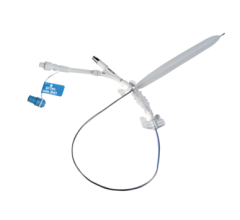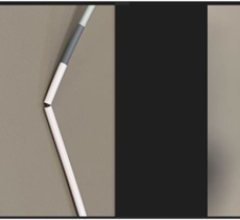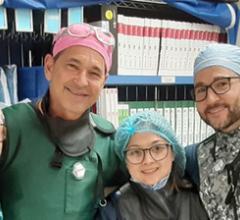
November 4, 2011—Miracor Medical Systems GmbH announced that data will be reported during next week’s Transcatheter Cardiovascular Therapeutics (TCT) 2011 scientific meeting in San Francisco. The data show that the PICSO (Pressure-controlled Intermittent Coronary Sinus Occlusion) system is safe and feasible during elective percutaneous coronary intervention (PCI) using a femoral vein approach.
The PICSO procedure was performed successfully on 10 patients by Prof. Jan Piek, M.D., and his group at the Academic Medical Center, Amsterdam, Netherlands; the procedure was part of the Prepare PISCO study of stable angina patients. Based on these clinical results, Miracor will soon initiate the Prepare RAMSES study in acute coronary syndrome patients.
“In spite of a successful primary PCI, suboptimal myocardial reperfusion occurs in approximately 30 percent of STEMI patients, and this occurrence is strongly correlated with unfavorable outcomes for patients,” said Piek. “Our study demonstrates that PICSO significantly increased the redistribution of blood into the ischemic myocardium, which is very encouraging as we look to enroll patients into the multi-centre ‘Prepare RAMSES’ study,” he added.
Prof. Piek’s results will be presented during a special spotlight session on ‘Approaches to Reperfusion Injury and Enhancing Myocardial Recovery’ moderated by Mitchell W. Krucoff, M.D., (Duke University Medical Centre, Durham, N.C.) and Holger Thiele, M.D. (University of Leipzig Medical Center, Germany)
Timely myocardial reperfusion using primary PCI remains the most effective treatment strategy for limiting infarct size, reducing left ventricular remodeling, and improving clinical outcomes following ST-segment elevation myocardial infarction (STEMI). Despite optimum primary PCI, the mortality and morbidity following a STEMI event remains sizable. Clearly, primary PCI alone is not enough to eliminate the risk for future cardiovascular events.
Paradoxically, the process of restoring coronary blood flow can in itself exacerbate the myocardial injury. Recent studies have also shown that reduced door-to-balloon time does not reduce mortality in STEMI patients. The PICSO system offers a new approach to reduce myocardial injury and to revitalize ischemic myocardium, thereby providing a cardioprotective effect called cardioprotected PCI (cPCITM).
Initial clinical results show positive effects on MACE, restenosis rates, and long-term event-free survival. The system consists of the PICSO Impulse Console and the disposable, single-use PICSO Impulse Catheter.
For more information: www.miracormedical.com


 June 13, 2024
June 13, 2024 








